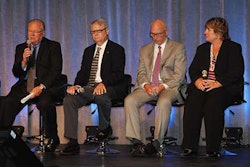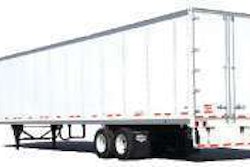Those who expect a quick turnaround in industry profits and the purchase of many more new trucks are overlooking trucking fundamentals, says Tim Kohl, president of Marten Transport. Speaking at the Avondale Partners Trucking Forum in Dallas, Kohl noted that owing to a variety of factors, including emissions regulations and the costs of key raw materials such as steel, aluminum and rubber, the cost of trucks and trailers is rising at double-digit rates. Meanwhile, freight rates are rising at 2 percent to 3 percent. “And somehow everything is going to get better by the end of the year? It’s not.”
Rates are up only 2 percent to 3 percent because “shippers are leveraging the fact that there hasn’t been a shortage of capacity,” Kohl says. That will change, but it will take time. “The equipment is old out there, and it’s not getting any newer….The rates aren’t sufficient to cover the costs of our equipment.” But eventually, capacity will drop because equipment will simply wear out, probably starting with trailers, Kohl says. Then shippers will need to pay higher rates to get capacity, and fleets will have the resources to renew their trucks and trailers. “We think the rates are coming. We’re looking forward to next year. The rest of this year is still tough.”
Over the past several years, Marten has greatly changed its business, moving from a predominantly long-haul truckload carrier to one with a more diverse mix of regional truckload, intermodal, Mexican cross-border and brokerage operations, Kohl says. The goals behind this “multifacted transportation service solutions” approach is both to diversify the revenue base and be more flexible and effective in solving customers’ problems, he says. The move to regional from long-haul might be most dramatic. In December 2007, just 8 percent of Marten’s tractors were used in regional truckload operations. Today, that’s more than 75 percent..
Intermodal is another area where Marten has been willing to rethink traditional approaches. “There is a lot more opportunity for intermodal as the rails get their act together.” Rather than fight this trend, Marten embraces it, Kohl says. “If it services our customers better, we’re going to do it.”
Another important trend is the continuing transformation of the supply chain. “We overplayed China, and now you hear more about near-shoring. We’re hauling more and more from Mexico.” As for brokerage, Marten’s objectives are important but limited, Kohl says. “We initiated brokerage in 2005 to provide surge capacity for our customers. We’re not trying to be C.H. Robinson.” Marten — a leading refrigerated carrier — also is slowly moving into the dry freight business.
One result of all of these changes is a diversification of Marten’s revenue base. The company’s top five accounts today represent about 30 percent of revenues, down from 41 percent in 2010, and no single customer is responsible for more than 7 percent of revenue.
Ultimately, Marten’s culture is to be efficient and innovative. For example, with the changes in the hours-of-service rules, operations has changes its load planning to minimize the productivity hit from the new rules governing the 34-hour restart. This culture has led to several awards recently, including Commercial Carrier Journal’s Innovator of the Year award in 2011.
“You have to be able to be flexible and nimble,” Kohl says. “It’s not your father’s trucking industry anymore.”











